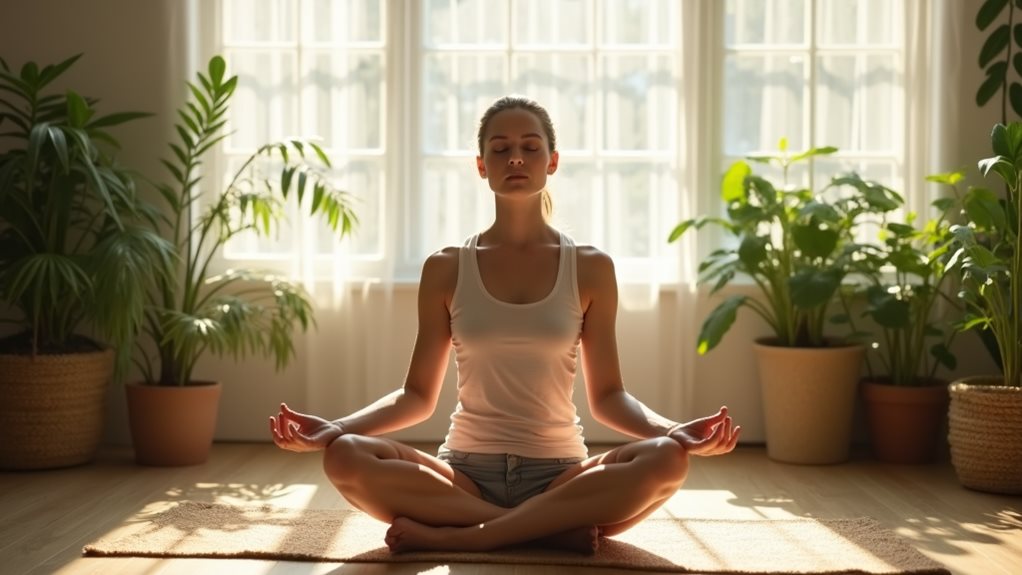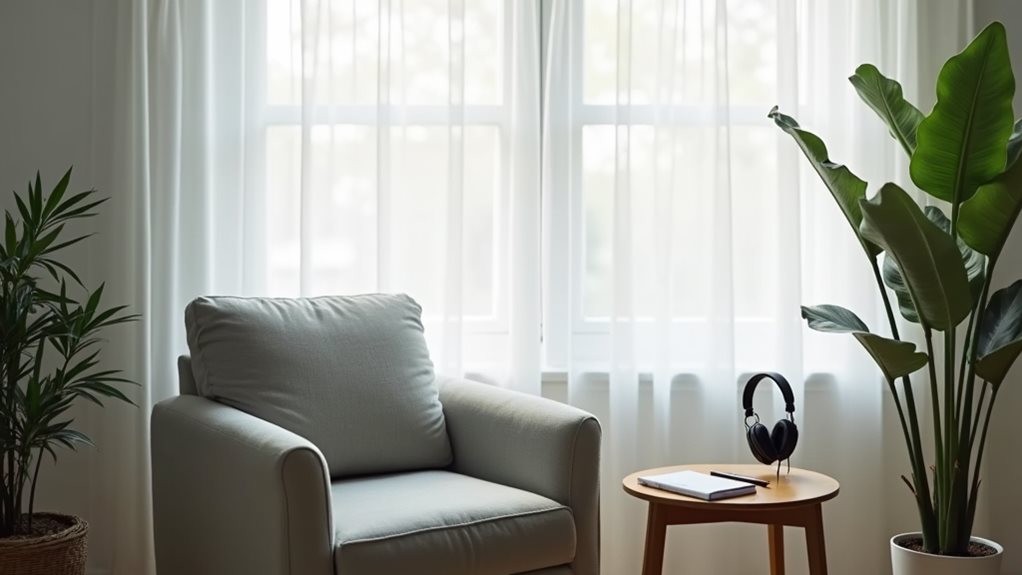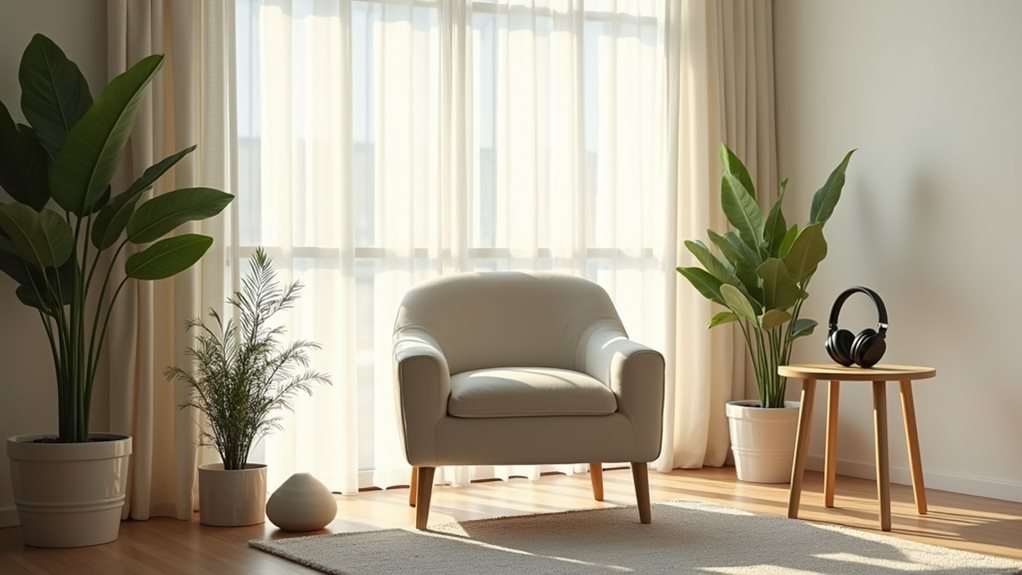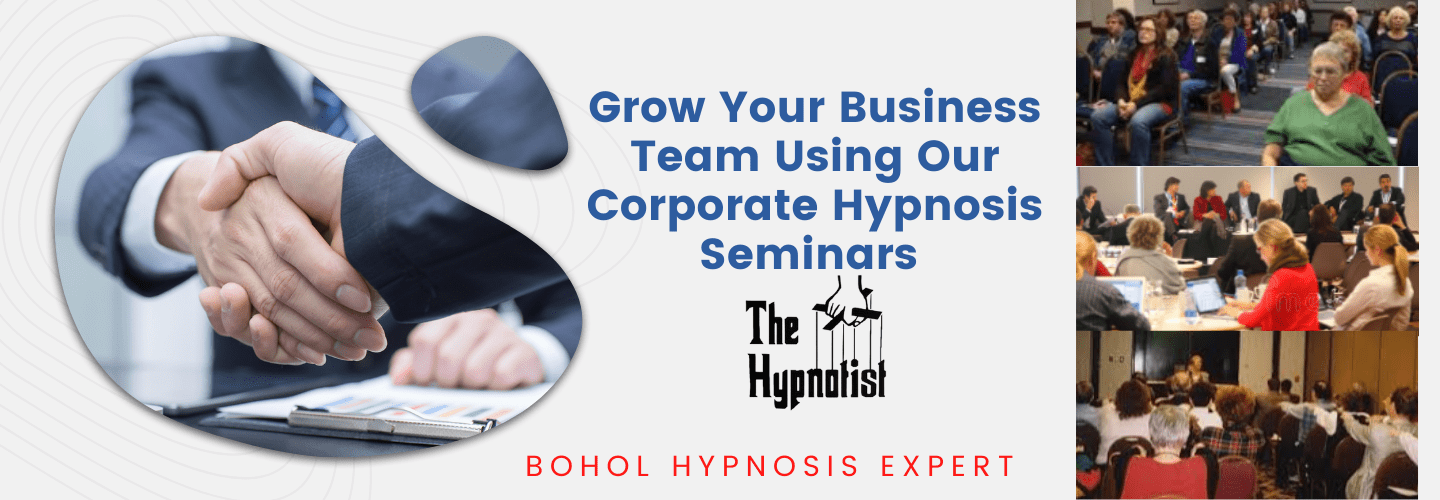
Self-hypnosis techniques are scientifically proven to foster tranquility by tapping into the subconscious to alter stress responses and improve mental clarity. Initiating with deep breathing and progressive muscle relaxation, these methods integrate affirmations and visualization to combat anxiety effectively. Daily practice enhances resilience, fundamentally reshaping mental pathways toward peace. By establishing a routine and monitoring progress, individuals experience significant relief. Further exploration of these techniques can amplify their calming effects.
Key Takeaways
- Begin self-hypnosis with deep, controlled breathing to promote relaxation and ease anxiety.
- Employ progressive muscle relaxation techniques to reduce physical tension and stress.
- Use positive affirmations like "I am calm and in control" to reshape anxious thought patterns.
- Integrate visualization of calming images and settings to strengthen relaxation responses.
- Regularly practice these techniques to enhance mental resilience and maintain tranquility.
The Science Behind Self-Hypnosis for Anxiety Relief
While self-hypnosis might seem mystical to some, its effectiveness in mitigating anxiety is grounded in scientific research.
Neuroscience insights reveal that self-hypnosis taps into the subconscious mind, reshaping thought patterns that drive anxiety. This process leverages subconscious influence to foster a state of deep relaxation and mental clarity.
By accessing this powerful internal resource, individuals can alter their emotional responses to stress, promoting a serene and balanced mental state.
Empathetically understanding the subconscious's role not only demystifies self-hypnosis but also highlights its practicality as a tool for profound and lasting anxiety relief.
Key Techniques for Effective Self-Hypnosis
To effectively harness the potential of self-hypnosis, it is essential to master key techniques that tap into the subconscious mind.
Initiating a session with deep, controlled breathing sets a foundation for relaxation and anxiety management. This physiological calm allows for more effective engagement with the subsequent stages of self-hypnosis.
Employing progressive muscle relaxation further diminishes tension, promoting a deeper state of tranquility.
Affirmations tailored to counteract specific anxieties can reprogram the mind's response to stressors, reinforcing a sense of control and well-being.
Practicing these self-hypnosis techniques regularly can greatly alleviate anxiety, fostering sustained mental resilience.
Harnessing the Power of Visualization in Anxiety Management

Harnessing the power of visualization in anxiety management offers a transformative approach that employs the mind's capacity to generate calming images and scenarios.
By practicing visualization exercises, individuals can effectively reduce anxiety through structured mental imagery. Here are practical steps to enhance this technique:
- Select a peaceful setting: Begin in a quiet space where disturbances are minimized.
- Employ detailed imagery: Imagine a serene environment, focusing on vivid sensory details—sights, sounds, and smells.
- Regular practice: Dedicate time daily to these exercises to strengthen the neural pathways associated with relaxation and tranquility, thereby improving overall emotional resilience.
Crafting and Using Positive Affirmations
Positive affirmations serve as powerful tools in self-hypnosis, enabling individuals to reshape their thinking patterns and reinforce self-belief.
Crafting effective affirmations involves selecting phrases that are positive, present tense, and personal. For instance, affirmation examples like "I am calm and in control" or "I choose to feel peaceful" can greatly anchor the subconscious in a state of tranquility.
These crafted affirmations, when repeated during self-hypnosis, help reprogram the mind, shifting from negative loops to empowering, positive narratives.
Regular use of these affirmations enhances mental resilience, effectively reducing anxiety and fostering a sustained sense of inner peace.
Setting Up Your Self-Hypnosis Routine

After establishing the importance of crafting and using positive affirmations in self-hypnosis, it becomes equally significant to develop a structured routine for these practices.
A consistent approach not only enhances the effectiveness of self-hypnosis but also solidifies it as a fundamental part of daily self care practices.
Consider these steps:
- Choose a Consistent Time: Dedicate a specific time each day for self-hypnosis to foster habit formation.
- Prepare a Mindful Environment: Select a quiet, comfortable space free from interruptions to enhance focus and relaxation.
- Set Duration Goals: Start with brief sessions, gradually increasing the time as familiarity and comfort with the practice grow.
Measuring Success and Progress With Self-Hypnosis
Measuring the success and progress of self-hypnosis involves tracking changes in anxiety levels and emotional well-being over time. Establishing success indicators and progress tracking systems is essential for understanding the effectiveness of self-hypnosis techniques. A simple way to monitor improvements is through regular self-assessment scales or journals.
| Week | Anxiety Level (1-10) |
|---|---|
| 1 | 8 |
| 2 | 6 |
| 3 | 5 |
| 4 | 3 |
This table exemplifies a possible reduction in anxiety, illustrating how self-hypnosis might contribute to a significant improvement in emotional well-being over time.
Advanced Tips for Enhancing Self-Hypnosis Sessions

Building on the foundational practices of self-hypnosis, individuals may seek to enhance their sessions by incorporating advanced techniques aimed at deepening the state of relaxation and effectiveness of each practice.
To further customize and boost these sessions:
- Layered Voice Tracks: Utilize recordings with multiple voice tracks that deliver complementary messages, enhancing subconscious engagement.
- Sensory Integration: Integrate subtle background sounds or aromas that align with the session's goals, enriching the sensory experience and deepening relaxation.
- Personalized Scripting: Develop tailored scripts that address specific personal challenges or goals, making each session uniquely effective.
These advanced techniques facilitate profound session customization and heightened self-hypnosis outcomes.
Frequently Asked Questions
Can Self-Hypnosis Trigger Unwanted Memories or Emotions?
Self-hypnosis can sometimes trigger memory retrieval or emotional responses. While often therapeutic, these reactions should be managed with care, especially for individuals with traumatic histories, to avoid overwhelming or adverse emotional experiences.
Is Self-Hypnosis Safe During Pregnancy?
Self-hypnosis during pregnancy, employing relaxation techniques, is generally considered safe and beneficial. It promotes maternal well-being, reduces stress, and enhances emotional tranquility, provided it is practiced under guidance and with appropriate medical consultation.
How Does Self-Hypnosis Differ From Meditation?
Self-hypnosis methods typically involve guided suggestions to reach a trance-like state, focusing on specific outcomes. Meditation benefits include mindfulness and presence, often emphasizing broader awareness without a targeted change in mental state.
Can Children Practice Self-Hypnosis for Anxiety?
Steering through the turbulent seas of childhood anxiety, children can indeed harness the calming shores of self-hypnosis. This practice offers benefits like enhanced relaxation and emotional control, making it a viable tool for young minds.
What Are Legal Considerations for Practicing Hypnotherapy Professionally?
Practicing hypnotherapy professionally requires adherence to specific licensing requirements and ethical guidelines. These regulations guarantee therapists are qualified and act responsibly, protecting public welfare while providing effective, empathetic treatment for conditions like anxiety.
Conclusion
In the tapestry of modern life, self-hypnosis threads through the chaotic weave, offering a quiet alcove of serenity. By mastering these techniques, individuals can sculpt a mental sanctuary, transforming the raw silks of stress into the smooth velvets of calm. As research illuminates the path, each step taken in self-hypnosis is both a journey inward and a stride towards profound peace, proving that within the mind lies the power to soothe the tempests of everyday existence.





